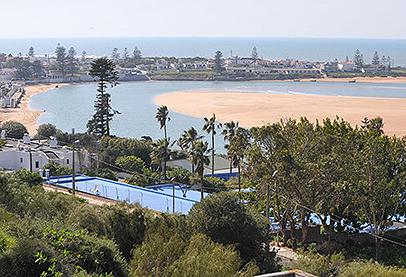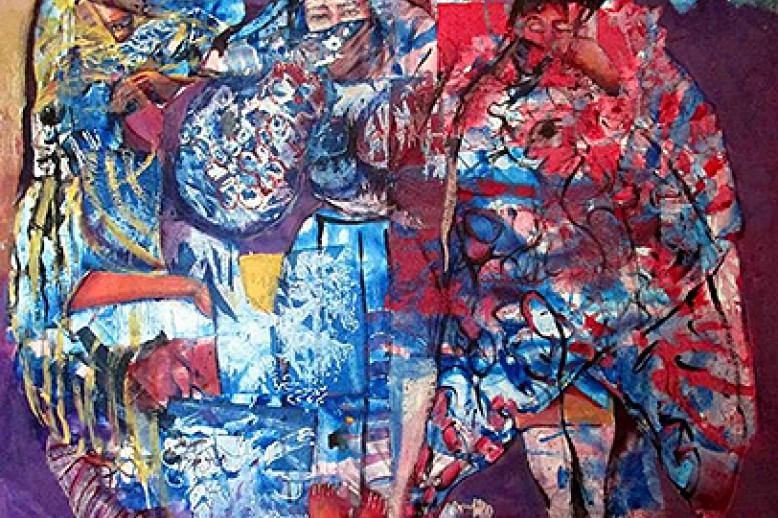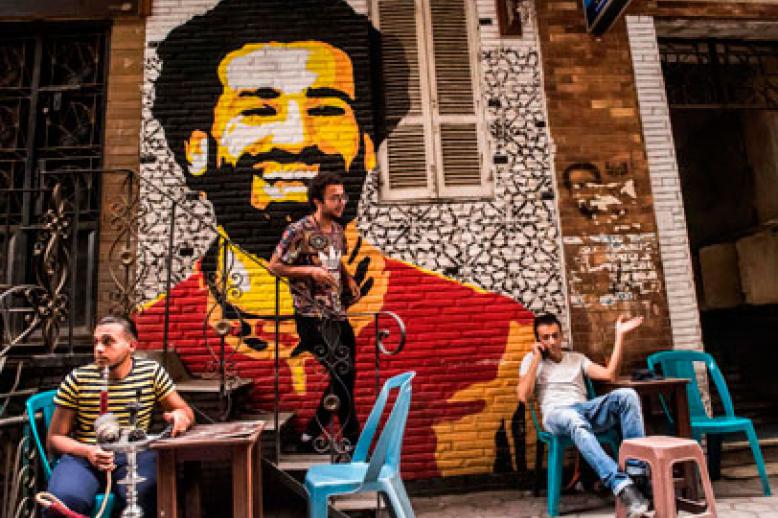Oualidia, Morocco’s unusual seaside village for the laid-back travellers

Looking for peace and quiet and breathtaking views? Morocco’s coastal Western village of Oualidia is the place to be.
Forget about monuments and the hassle of souvenir and handicraft vendors in Morocco’s imperial cities. Forget about the stressful urban life that drains energy. The clock in Oualidia ticks slowly.
The El Jadida-Safi motorway has eased access to Oualidia. For those who choose to use public transport from Casablanca, there are a few coaches that serve this itinerary. However, they make many stops, which means it might take four hours to reach Oualidia, instead of a 3-hour journey via the motorway.
Nevertheless, the journey is worth it because Oualidia is not a usual coastal resort. Some celebrities choose to spend time in the village of more than 15,000 inhabitants and famous for its 1protected lagoon and oysters.
Canadian actress and model Shay Mitchell stayed last May at Oualidia’s kasbah-like La Sultana Hotel, the only five-star hotel in the village and just above the lagoon.
I decided to take a small boat with a friend to look for flamingos and stilts migrating from Spain to sub-Saharan Africa. I had to haggle with the boat owner, bringing the price down from 250 Moroccan dirhams to 200 dirhams (from $27 to $22) for a 1-hour ride on the lagoon.
As boat owner Mohammed Ghouass was sailing us through the lagoon, the ruined summer palace of late King Mohammed V, the grandfather of King Mohammed VI, appears as merely a skeleton. It has been abandoned for more than 50 years but is still heavily guarded.
I wanted to take a picture of the remaining arches and roofless staircases but was abruptly halted by Ghouass: “Please do not take photos! I will be penalised if they see us,” he warned with a serious tone.
Almost above the palace stands a decaying kasbah, built in the 17th century by the village’s namesake, Sultan El Oualid. It is the only historic monument in the village.
Heading towards the northern edge of the lagoon, adorned by colourful fishing boats, oyster beds were visible across the banks due to low tide. A fisherman threw his net and, as we approached, I wanted to take a closer picture but he angrily waved at me: “No photos!”
Ghouass explained that the fisherman was not allowed to catch fish with the net in the lagoon but he said with a sigh: “This is their only bread and butter. How do you want them to survive?”
Oualidia inhabitants live mostly on fishing and agriculture. Tourism is seasonal in the village, which doubles in population in the summer as mainly local tourists enjoy its golden sandy beach.
After we reached shore, I decided to try one of the fancy restaurants overlooking the beach but Ghouass proposed a walk down the beach to the fishing village. The 10-minute walk was well worth it. The smell of fresh fish on the grill filled the air while seagulls desperately waited for leftovers thrown to them by tourists.
A young fisherman politely asked if we were going to have lunch. He took me to the barbecue next to which were a mouth-watering variety of fresh fish, including lobster and king prawns.
We had a tomato-and-onion salad, four willows, one pandora, one lobster and half a kilo of king prawn for 250 dirhams ($27) with a sea view, a price that could have been more than triple in a restaurant.
While having lunch, a man in his 80s approached politely with a small basket half holding sea urchins and razor clams. “It’s 2 dirhams per piece. Why don’t you take all of them?” asked Lhaj Lfatmi, whose bent back was the proof of tough years of labour.
“I used to grow tomatoes and jumped to this business. Praised be God, fishermen give half a basket urchin and razor clams for free to earn a bit of money,” he said.
A few minutes later, a much younger person arrived with a basket of oysters that were very tempting while we were still having lunch. “Six dirhams per oyster,” he said.
I had indulged in Oualidia’s trademark, which had earned it the title “oyster capital,” a reference to the major role shellfish harvesting plays in the local economy.
Freshly made mint tea was a must to digest the fish (the teapot cost $2.20 for two people) while watching waves crashing against the rocks.
Next to us were tables filled with 60-something tourists who drove from Europe with their caravans that filled the campground a few metres from the beach.
As we walked to downtown, oyster vendors on motorbikes roamed Oualidia’s dormant streets.
Most of the houses are painted in blue and white, which gave the impression of being in a northern seaside resort.
Oualidia is the perfect place for those seeking a laid-back break. There are plenty of outdoor activities, including surfing, bird watching and quad bike riding on the beach (a quad bike can be rented for $22 an hour).
Saad Guerraoui is a regular contributor to The Arab Weekly on Maghreb issues.
This article was originally published in The Arab Weekly.




